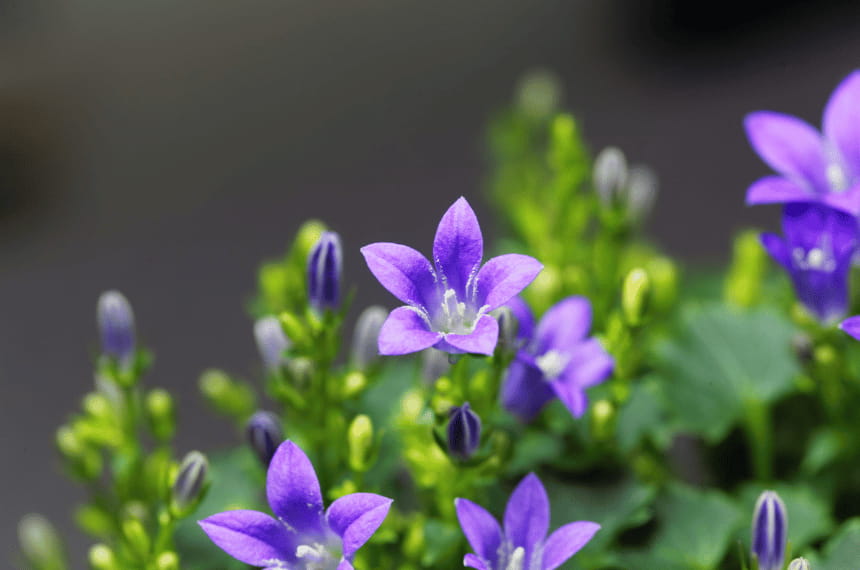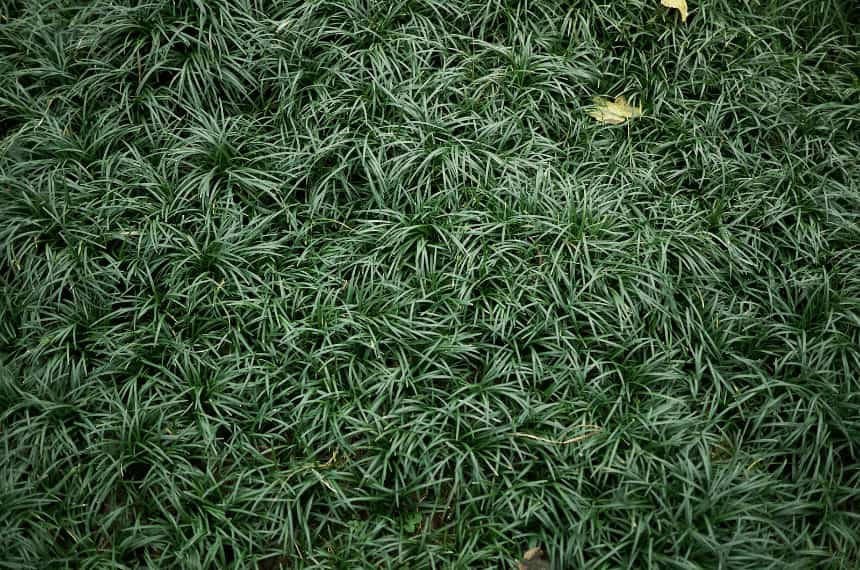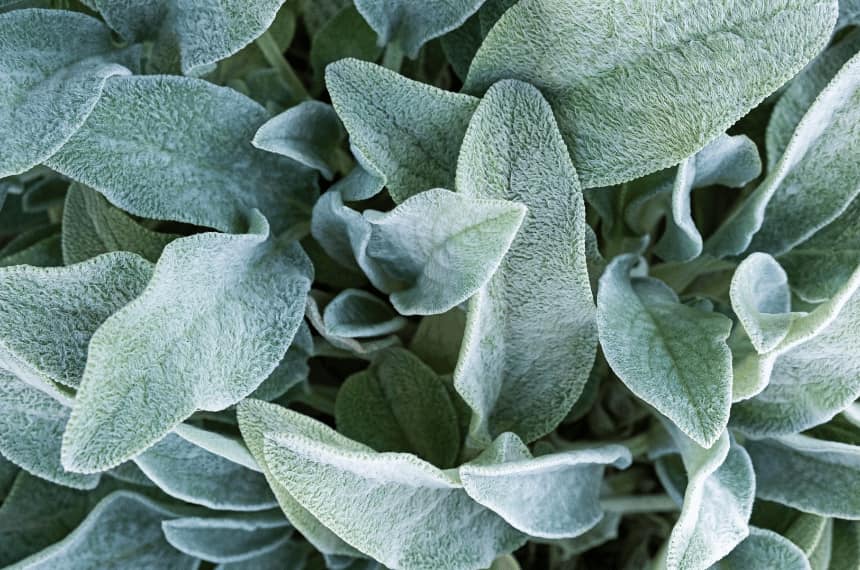Here’s a delightful revelation: not all plants crave sunlight. Embracing this, we venture into the world of ‘shade-loving ground covers’, the lush tapestries that thrive even in semi-shaded Australian gardens. These transformative ground covers offer aesthetic charm and practical benefits like soil erosion control.
Dive with me into this exploration, unveiling the wonders of these unique plants tailored for your Australian haven.
Characteristics of shade-loving ground covers
Shade-loving ground covers in Australia are an intriguing class of horticultural delights known for their exceptional traits that set them apart. Let’s delve into what makes these sun-shy plants so astounding.
Some characteristics of shade-loving ground covers include:
- Thrive in low-light environments: These remarkable plants are adapted to flourish under a canopy. So, whether you’re trying to landscape beneath a tall tree or against a shady wall, these resilient cover ground plants can thrive where other plants fade away.
- Dense growth habit: Most shade-loving ground covers display dense growth habits. This becomes imperative when you want to cover parts of your garden with thick foliage and vibrant blooms instead of bare soil or unsightly weeds. Not only does this make your patch look lush and well-kept, but it contributes greatly towards erosion control by holding the soil together.
- Low maintenance requirements: Once established properly using correct planting techniques (that I will cover later on), these locales’ hardy ground cover plants full sun Australia selections require little input from you while giving back plenty in terms of form and function.
Indeed, these distinctive attributes define shade loving ground covers Australia gardeners have come to value over time. Each species may express these traits slightly differently due to genetic variations. Be prepared for some surprises along your gardening journey! It’s hard work—but an absolutely fulfilling adventure amidst nature—isn’t it?
Benefits of Shade Loving Ground Covers in Australia
Shade-loving ground covers come with various benefits, especially for Australian gardens. Not only are they aesthetically pleasing, but they also perform a myriad of essential functions that contribute to the health and preservation of your garden ecosystem.
Some benefits that I enjoy from shade loving ground covers include:
- Soil erosion prevention: One significant advantage these ground cover plants offer is their ability to prevent soil erosion. Their extensive root systems hold the soil together, stabilising it against erosive forces like wind and water runoff. So, if you have spots in your yard that are at risk of eroding, planting shade-loving ground cover can be an effective solution.
- Moisture conservation: In the arid regions of Australia, conserving moisture is essential for any plant life to thrive. These plants serve as living mulch, providing a natural barrier against evaporation from the sun’s direct heat. This characteristic makes them ideal for dry shade areas where other plants might struggle due to insufficient sunlight or water.
- Nature’s own weed control: Shade-loving ground covers grow densely and quickly spread across the available area, denying pesky weeds the space they need to establish themselves. As such, by opting for these plants, you’re also employing nature’s own weed control system.
- Enhancement of biodiversity: Another benefit worth mentioning is fostering biodiversity within your garden space. Incorporating different shade-loving ground cover plants like Native Violet or Creeping Boobialla allows various microorganisms and insects beneficial to our ecosystem to coexist harmoniously.
- Aesthetics and visual appeal: Shade-loving ground covers in Australia bring lushness and uniformity to a garden design, which might seem sparse otherwise due to limiting factors like less exposure to sunlight. They add texture and colour, too; creeping varieties offer a verdant carpet underfoot while flowering types treat the eye with vibrant blooms.
Ultimately, well-chosen ground covers can turn your shade-filled garden into an oasis of tranquillity and life. Not only will you gain from its protective and preservation properties for your yard, but you also amply benefit from the aesthetic delight they afford. Invest time in selecting the perfect species that aligns with your preferences and particular requirements of your garden’s environmental conditions.
Factors to consider when selecting shade loving ground covers
When it comes to gardening, particularly in selecting ground covers that flourish in shade, there are several factors you need to consider. Understanding these factors will help ensure a thriving and beautiful garden space. Since every plant has unique requirements for healthy growth, bearing the following points in mind would be beneficial.
Nature of soil
One of the most critical aspects of a successful garden is the nature of your soil. Whether sandy or clay, acidic or alkaline — each plant has its preference. For instance, Creeping Boobialla thrives in well-draining sandy or loamy soils, whereas Bugleweed prefers rich and moist soils. It’s always a good start to test your soil before choosing shade loving ground cover plants.
Climate and weather conditions
Australian weather can range from tropical climates in the North to temperate zones in the South. Each plant responds differently to temperature fluctuations, rainfall patterns and humidity levels. While Dwarf Mondo Grass might perform exceptionally well under cooler conditions, Star Jasmine may prefer warmer regions.
Plant maintenance
Some plants require consistent care, while others can thrive on neglect. If you’re an experienced gardener with plenty of time, you may opt for high-maintenance varieties like Lamb’s ear, which requires regular watering and pruning. On the contrary, if your lifestyle restricts regular upkeep, low-maintenance options, including Dymondia Silver Carpet, could be a perfect fit.
Fast-growing vs slow-growing varieties
Depending on whether you need quick coverage or not, take into account how fast or slow growing your selected ground cover is. Some fast-growing varieties, such as Dichondra, serve well when immediate coverage is needed. In contrast, slow growers like Blue bugle tend to form thick, impenetrable mats over time, offering weed resistance benefits.
Conclusively, making thoughtful decisions about selecting suitable shade-loving ground covers for your Australian garden will put you on the right path to creating delightful, sustainable green spaces.
Top shade loving ground covers in Australia
Australia flaunts an array of magnificent shade-loving ground cover plants adept at thriving in the country’s unique climatic conditions. So, what ground cover grows best in Australia’s shady patches?
Our top picks are:
- Bellflower (Campanula portenschlagiana)
- Blue bugle (Ajuga genevensis)
- Bugleweed (Ajuga reptans)
- Creeping boobialla (Myoporum parvifolium)
- Creeping thyme (Thymus serpyllum)
- Dwarf mondo grass (Ophiopogon japonicus ‘Nanus’)
- Kidney weed (Dichondra argentea)
- Silver carpet (Dymondia margaretae)
- Lamb’s ear (Stachys byzantina)
- Native violet (Viola hederacea)
- Star jasmine (Trachelospermum jasminoides)
Each of these plants bears unique characteristics, making them perfect choices for your cosy Australian backyard surrounded by shadows.
However, selecting the right ground covers requires evaluating certain factors such as your soil type, local climate and the specific shade tolerance level of each species. These of which I will discuss further in subsequent sections to guide you efficiently through your gardening journey.
Let’s dive in!
1. Bellflower (Campanula portenschlagiana)

In my gardening journey, the Bellflower, commonly known as Campanula, has always stood out. Originating from diverse habitats, from tranquil woodlands to rugged alpine terrains, it’s a plant that showcases nature’s adaptability. Its ability to flourish in shaded areas, where sunlight is often a luxury, makes it a valuable addition to many Australian gardens, including mine.
What truly captivates me about the Bellflower is its delicate bell-shaped blossoms. They not only enhance the garden’s aesthetics but also serve as a magnet for pollinators. Observing bees and butterflies being drawn to these blossoms is a daily delight. For those keen on introducing a resilient and attractive plant to their garden, the Bellflower is a commendable choice.
2. Blue bugle (Ajuga genevensis)

While tending to various plants, the Blue Bugle, scientifically known as Ajuga reptans, has consistently caught my attention. Its rapid growth rate and sprawling nature make it an ideal ground cover, quickly filling in gaps with its lush, dark-green foliage. As the seasons transition from spring to early summer, my garden is adorned with striking blue flower spikes, creating a mesmerising contrast against the green backdrop.
What I particularly appreciate about the Blue Bugle is its adaptability. Even in areas of my garden where sunlight is inconsistent, this plant thrives, showcasing its tolerance to partial shade. For anyone looking to diversify their garden with a versatile and visually appealing ground cover, I can personally vouch for the Blue Bugle’s charm and resilience.
3. Bugleweed (Ajuga reptans)

In my diverse garden palette, the Ajuga Australis, better known to many as the Australian Bugleweed, holds a distinctive position. This robust perennial has proven its worth time and again, especially in those shaded corners of my garden. Its low-growing nature makes it an efficient ground cover, ensuring that no patch of soil remains exposed for long.
One of the standout features I’ve come to admire is its glossy foliage, which remains vibrant throughout the year, adding a rich texture that complements other plants. But the real showstopper arrives with the changing seasons. As the year progresses, the garden is treated to a burst of blue-violet flowers, injecting a vibrant colour that contrasts beautifully with its green leaves. For those who, like me, appreciate a blend of functionality and beauty in their gardens, the Australian Bugleweed is a choice that seldom disappoints.
4. Creeping boobialla (Myoporum parvifolium)

Originating from the southeastern corners of Australia, Creeping boobialla, also known by its botanical name Myoporum parvifolium, is a garden gem I’ve come to cherish. Its capacity to spread, forming lush blankets of gleaming green leaves, is enchanting. As the calendar pages turn to spring and summer, this verdant spread becomes a stage for petite blossoms in hues of white and pink, playfully emerging amidst the foliage. Their presence not only elevates the garden’s visual appeal but also adds a touch of seasonal charm.
What truly sets Creeping boobialla apart for me, however, is its robust nature. It thrives with vigour, even under the relentless Australian sun, proving its mettle as a prime choice for those seeking durable, sun-embracing ground covers.
5. Creeping thyme (Thymus serpyllum)

From my garden’s shaded nooks to its sunlit patches, Creeping thyme, known botanically as Thymus serpyllum, has proven a versatile companion. Drawing from its Mediterranean roots, this plant showcases an impressive adaptability, seamlessly transitioning from arid, rocky terrains to the more subdued lighting of dense undergrowths.
As the seasons unfold, my garden is graced with its captivating purple blossoms, adding a vibrant splash against the green tapestry. Beyond its ornamental charm, Creeping thyme brings a functional twist to the table – its aromatic leaves, steeped in culinary heritage, infuse dishes with flavour. For garden enthusiasts like me, who appreciate beauty and utility, Creeping thyme is a delightful fusion of the two.
6. Dwarf mondo grass (Ophiopogon japonicus ‘Nanus’)

In my gardening adventures, the Dwarf mondo grass, scientifically termed Ophiopogon japonicus’ Nana’, has been a steadfast ally. Its cascade of slender, dark green leaves creates a soothing visual rhythm, making it an ideal pick for novices and seasoned gardeners. What truly endears this plant to me is its tenacity.
Whether faced with the scorching heat of droughts or the dappled light of semi-shaded spots, the Dwarf mondo grass stands undeterred, showcasing its inherent resilience. For those on the lookout for a reliable and elegant ground cover that thrives in shade, this plant is a commendable contender.
7. Kidney weed (Dichondra argentea)

Throughout my gardening endeavours, the Kidney weed, or Dichondra argentea as it’s scientifically known, has been a delightful discovery. Its distinct kidney-shaped leaves lend it not just its name but also a unique visual appeal. As I’ve observed, it rapidly colonises open spaces, weaving a rich emerald tapestry that’s especially suited for the cooler, shaded sections of the garden.
What amplifies my admiration for this plant is its low-maintenance nature. It thrives with minimal intervention, making it a dream for both novice gardeners and those with a seasoned green thumb. If you’re in search of a ground cover that effortlessly combines beauty with practicality, Kidney weed is a stellar choice.
8. Silver carpet (Dymondia margaretae)

For those fortunate enough to reside in the sun-kissed regions of Australia, the Dymondia margaretae, affectionately dubbed the ‘silver carpet’, is a noteworthy addition to consider.
With a penchant for the balmy coastal atmospheres akin to Perth or Melbourne, this plant stands out in its versatility. As a perennial ground cover, it’s not just its ability to endure the intense heat waves that impresses me but also its adaptability to thrive under varying light conditions, from the brilliant radiance of full sun to the more subdued luminance of partial shade.
If you’re scouting for a resilient yet visually appealing ground cover, the silver carpet is a distinguished candidate that promises to elevate your garden’s charm.
9. Lamb’s ear (Stachys byzantina)

The Lamb’s ear, known scientifically as Stachys byzantina, has always held a special place. Its preference for less-than-perfect soils, especially those with superior drainage like the sandy terrains often found along coastlines, is a testament to its hardy nature. But what truly captivates me about this plant is its tactile allure.
The silvery-grey, velvety foliage not only adds a distinct textural dimension to the garden but also serves as a serene backdrop for its more striking features. Come bloom season, the garden is adorned with statuesque spikes crowned with flowers in shades of pinkish-purple, creating a visual spectacle that’s hard to overlook.
For those keen on introducing a touch of softness paired with vibrant floral displays, Lamb’s ear is an exemplary choice that seamlessly marries resilience with beauty.
10. Native violet (Viola hederacea)

During my botanical explorations, I’ve been continually drawn to the charm of the Native violet, scientifically referred to as Viola hederaceae. Emblematic of Australia’s rich flora, especially when one thinks of plants that thrive in the shade, its allure is manifold.
The endearing heart-shaped leaves set the stage for its pièce de résistance: the delicate purplish-blue flowers grace the garden throughout the year. In my own garden, I’ve admired this tenacious plant craft intricate green tapestries beneath towering trees and along meandering pathways. Its presence ensures that even the more shadowed corners of my yard burst with consistent vibrancy.
For anyone looking to infuse their garden with a perennial splash of colour, especially in those cooler, shaded spots, the Native violet stands out as a quintessential Australian treasure.
11. Star jasmine (Trachelospermum jasminoides)

In the tapestry of my garden’s flora, the star jasmine, known scientifically as Trachelospermum jasminoides, holds a place of prominence. This dynamic climber, with its zest for scaling heights, truly comes alive during the balmy summer months.
As the days grow longer and warmer, my garden is enveloped in a fragrant embrace, thanks to the profusion of its pristine white blossoms. Beyond its olfactory delights, what I deeply appreciate about the star jasmine is its versatility. Whether under a Frangipani tree or weaving through a trellis, its dense growth ensures a lush, green backdrop year-round. For those seeking a blend of aromatic allure and visual splendour, especially in those cooler, shaded nooks of the garden, the star jasmine emerges as a stellar choice.
Choosing among these varieties of top shade-loving ground covers Australia has on offer can bring new life and captivating depth to darker parts of your garden while being suited perfectly for varied Australian conditions.
Creating a successful shade garden using ground covers
Creating a lush, thriving shade garden using ground covers entails paying close attention to planting techniques and ongoing maintenance. When applied correctly, these will ensure your chosen plants stay vibrant and healthy.
Proper planting techniques
From my own gardening experiences in Australia, I’ve learnt the importance of following the correct steps when establishing ground cover plants in shaded areas. Here are some essential tips:
- Prepare the site: Clear out debris, rocks or other unwanted materials. Ensure good drainage by tilling the soil if it’s too compacted.
- Select appropriate species: Choose from shade-loving ground covers like Bellflower, blue bugle or creeping thyme that can tolerate low light conditions.
- Plant correctly: Dig holes wide enough for plant roots and place each one at the same depth as they were growing in their containers.
- Soil composition matters: Remember to mix some compost with native soil upon planting to provide crucial nutrients to your new additions.
Remember, patience is fundamental, as it takes time for these shade-loving marvels to establish themselves.
Maintenance tips for shade loving ground covers
After safely potting your plants using proper methodologies, how do you maintain them? Let me share a few personal tips garnered through years of experience with Australian native ground cover varieties.
- Water wisely: Although these plant species thrive in shady locales, they still require regular watering during dry periods. Use your thumb test – if it comes out dry after inserting it into the soil near the plant base, water liberally.
- Guard against pests and diseases: Keep a vigilant watch over potential threats such as aphids or fungal infections common among low-duty plants operating under minimal sunlight.
- Prune regularly: Pruning not only helps maintain aesthetics but also keeps disease spread at bay. However, avoid excessive pruning; this may hinder growth and flowering capabilities.
- Feed periodically: Light feeding in spring (compost or slow-release organic fertiliser) will keep your ground covers vibrant and robust.
Remember, shade-loving ground cover plants are more than just aesthetic elements; they’re also integral contributors to the biodiversity of our gardens.
By effectively employing these guidelines, you can certainly create a verdant tapestry of shade-loving ground covers that’ll not only beautify your Australian yard but also serve as fantastic habitats for myriad beneficial insects and critters. Enjoy the wonders of shade gardening.
Conclusion
Shade-loving ground covers undoubtedly offer an array of benefits, from reducing soil erosion to enhancing the aesthetic appeal of your garden. Australia’s wide gamut of ground cover plants for shade can transform any shaded area in your garden into a verdant terrain of beauty.
My advice is to experiment with different species when you find what works best in your specific gardening conditions. Whether in Perth or Melbourne, there is a perfect plant match poised to thrive under those comforting shades in your yard.
Remember that even though they’re shade-loving ground covers, they still require basic upkeep like watering, pruning, and occasional fertilisation. With the right care and attention, these ground covers will reward you with aesthetically pleasing landscapes using low-growing ground cover for shade. So roll up those sleeves and start covering that open, thirsty ground today!
FAQs
What ground cover grows best in shade in Australia?
Among numerous shade-loving plants in Australia, the native violet is a prime choice. Hardy and resilient, it thrives even under dense canopies, providing an appealing carpet of verdant leaves and enchanting purple blooms.
What is the fastest spreading ground cover for shade?
If speed is of essence to you, look no further than the iconic Bugleweed (also known as Blue Bugle). Not only does it appreciate shady conditions, but it also proliferates rapidly, creating a lush expanse of green interjected by enthralling hues of blues and purples during the blooming season.
What is the Australian native ground cover lawn substitute?
For those desiring an eco-friendly option to traditional lawns, Creeping Boobialla makes an excellent alternative. Native to Australia, this evergreen plant grows readily in shaded areas. At the same time, its tiny glossy leaves and white flowers add irresistible charm to your garden.
What is the best ground cover around a foundation?
Star jasmine reigns supreme when it comes to growing near foundations or walls due to its compact growth habit and lack of a deep-root system. It effectively forms mat-like formations while offering fragrant blossoms through summer, adding beauty without posing structural risks.
What is the fastest spreading ground cover for shade?
In my experience, the fastest spreading ground cover for shade is the Creeping Jenny (Lysimachia nummularia). It quickly forms a dense carpet of golden-yellow leaves, especially in moist, shaded areas.
What is the best ground cover around a foundation?
The best ground cover around a foundation is the Dwarf Mondo Grass (Ophiopogon japonicus’ Nana’). It’s low-growing, requires minimal maintenance, and prevents soil erosion effectively near building bases.






